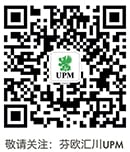(UPM, Helsinki, July 3, 2006) – UPM’s profitability improvement programme is going ahead as planned. Due to the costs associated with the programme UPM will book under non-recurring items totalling about EUR 123 million (net) in the income statement for the second quarter. Change of the value of forest assets will also reduce second-quarter results.
As a result of the production line closures UPM will book impairment charges of around EUR 130 million, most of which is attributable to the closure of Voikkaa paper mill.
Employee negotiations relating to the programme have been completed in both Finland and France. Based on the agreed workforce reductions, UPM will make a provision of approximately EUR 30 million in respect of personnel expenses for the second quarter. The cash effect of personnel expenses will materialise mainly during 2007-2008.
The sale of the Group Head Office real estate will produce a capital gain of around EUR 37 million.
During the second quarter 2006 UPM will also book a value reduction of approximately EUR 110 million relating to the Group’s forest assets in Finland. The change of the value is due to an increase of 0.5 percentage points in the interest rate adopted by UPM in its accounting. Also, UPM has stepped up the use of wood raw material harvested from its own forests.
As a result of the above non-recurring items and change of the value of forest assets, earnings per share for the second quarter will be negative.
For further information please contact:
Mr Olavi Kauppila, Senior Vice President, Investor Relations, tel. +358 204 15 0658
Notes to the editor:
In accordance with IFRS standard IAS 41 (biological assets), changes in the value of forest assets are entered in the income statement. In UPM's forest assets, living trees (biological assets) are measured at their fair value at each balance sheet date. The fair value of biological assets is determined based among others estimates on growth potential, harvesting, price development and discount rate. Changes in any estimates could lead to recognition of significant fair value changes in income statement (see UPM Annual Report 2005, p. 71).
